The answer to this question is as varied as there are Amish communities. In some instances, the answer to the question of how do the Amish Dry Laundry In Winter would be: “the same as they do during summer. There are some Amish who have gas dryers, and they just toss their clothes in the dryer like anybody else year round. Although, I will say that’s unusual, the exception rather than the rule.
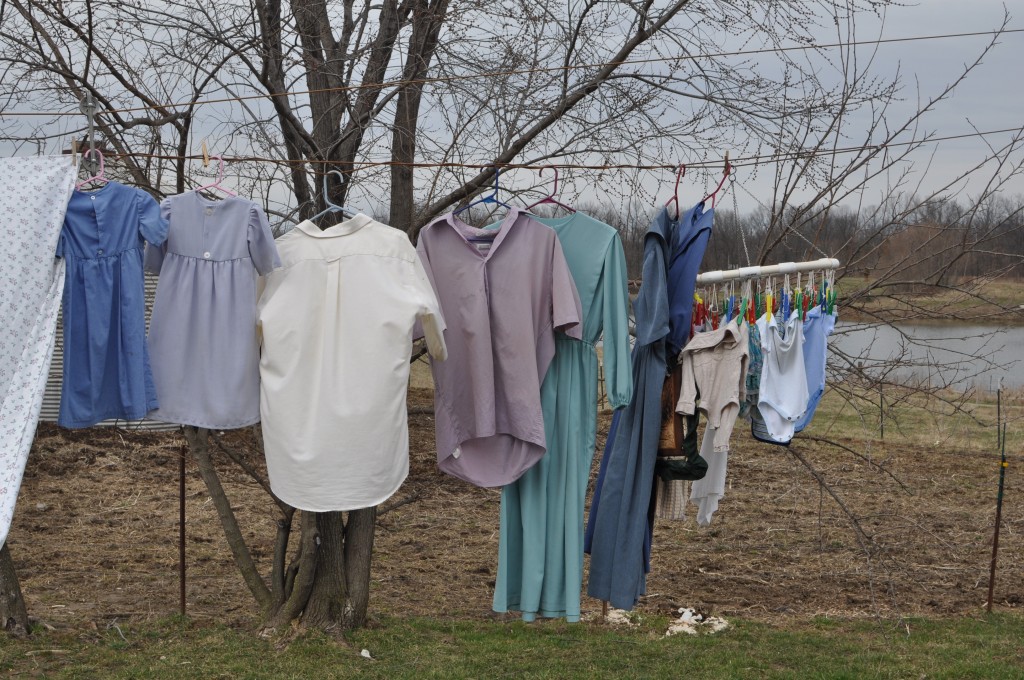
What is the most common way to dry clothes in the winter?
The most common method for an Amish person to dry their clothing, regardless of the time of year, is on a clothesline. During the warmer months, there’s no more iconic image of Amish country than dancing, colorful clothing flapping on the line, drying in the breeze.
But what if it’s 10° outside?
Clothes are still dry outside, they just undergo a “flash freeze" before they dry. According to SpeedQueen, my favorite dryer, the process works like this:
Drying on a line in winter is actually a form of freeze-drying thanks to sublimation – or ice evaporating from a solid state.
So the clothes will dry, they just may need to be laid flat once you take them in the house.
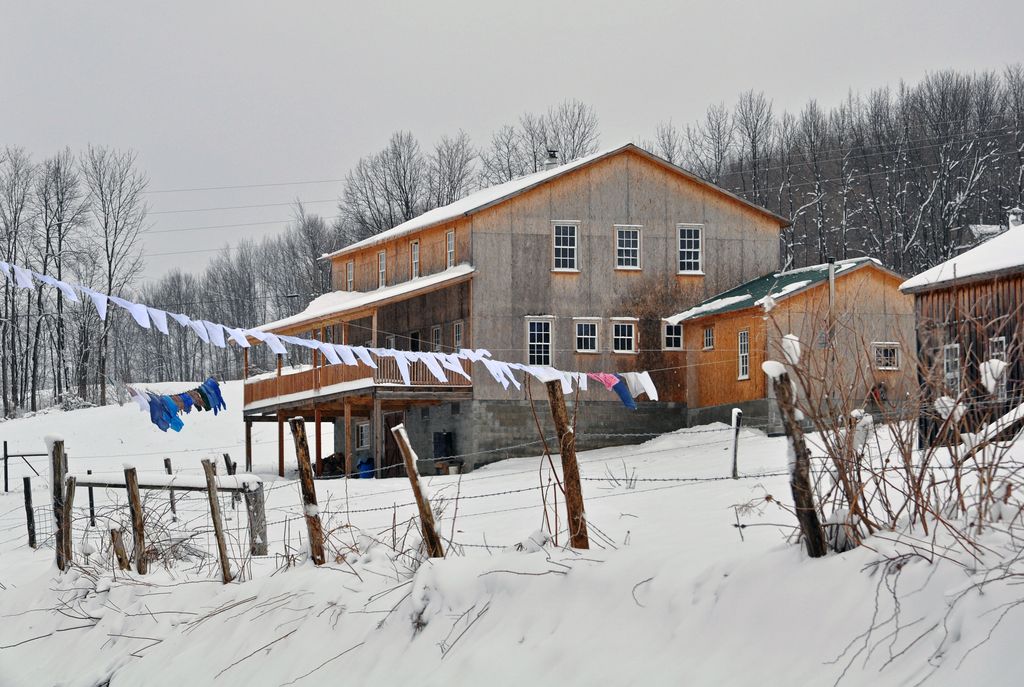
Still, other Amish will set clotheslines up in a basement and line dry that way. It can cause the basement to get a little bit more damp, and that is a slower way to dry. But it works.
Still, others will set up a line by their stove. Of course, you have to be very careful in doing that you don’t set up the clothes line too close to the stove and catch the closing on fire.
Innovative Ways to Dry
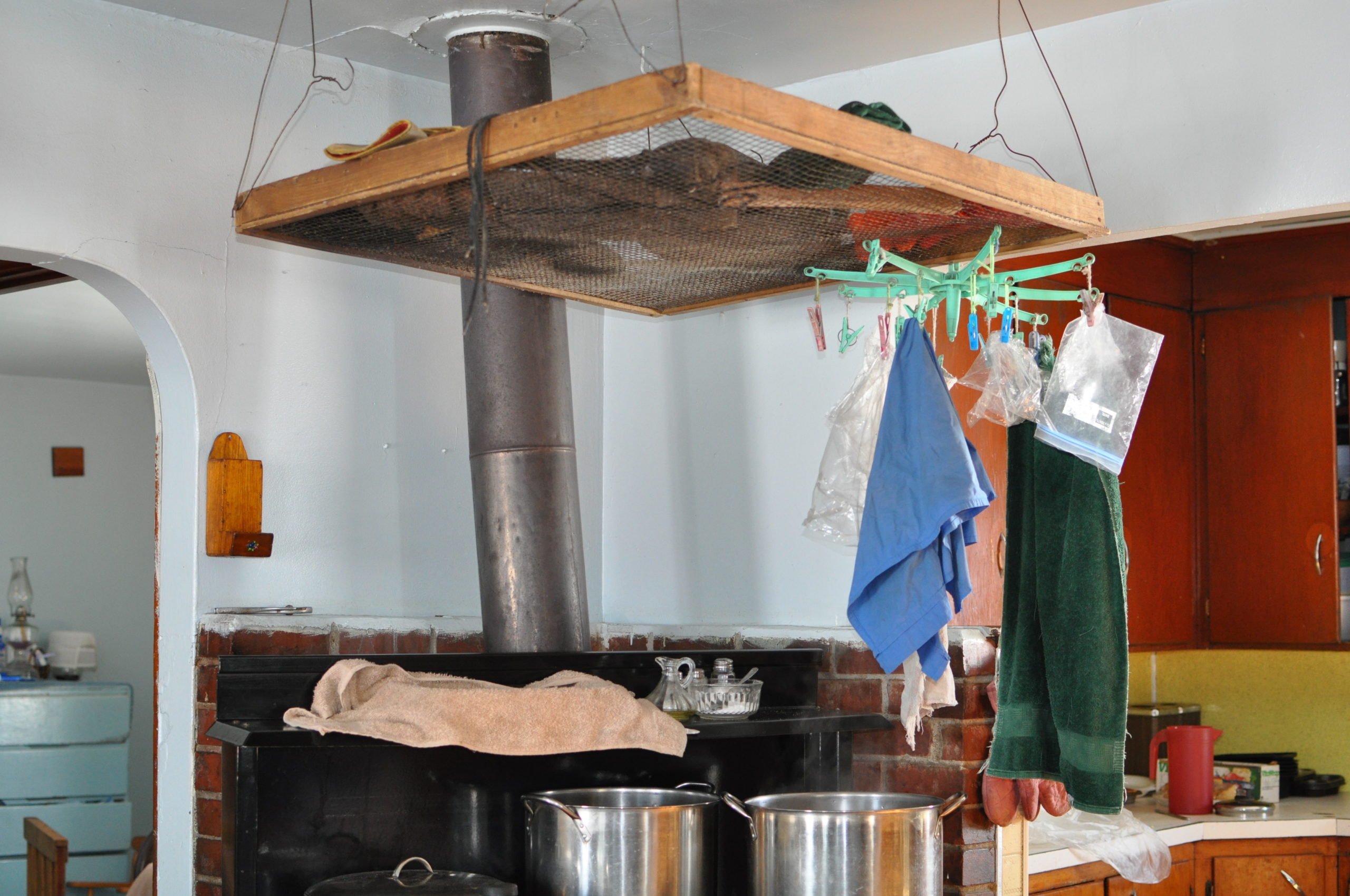
This was a drying method I spied in an Amish home in Canada. A platform has been constructed high above the wood stove to catch the heat. Items like shoes, socks, and boots can be placed on it to take advantage of the rising warm air.
Notice the little green "wheel" suspended from it? Perfect for drying small items. Not sure about the towel laying on the stove, hopefully they didn't leave that on there long. I wouldn't recommend that!
Read More About Amish Life In Winter
Bicycle Wheel Dryers
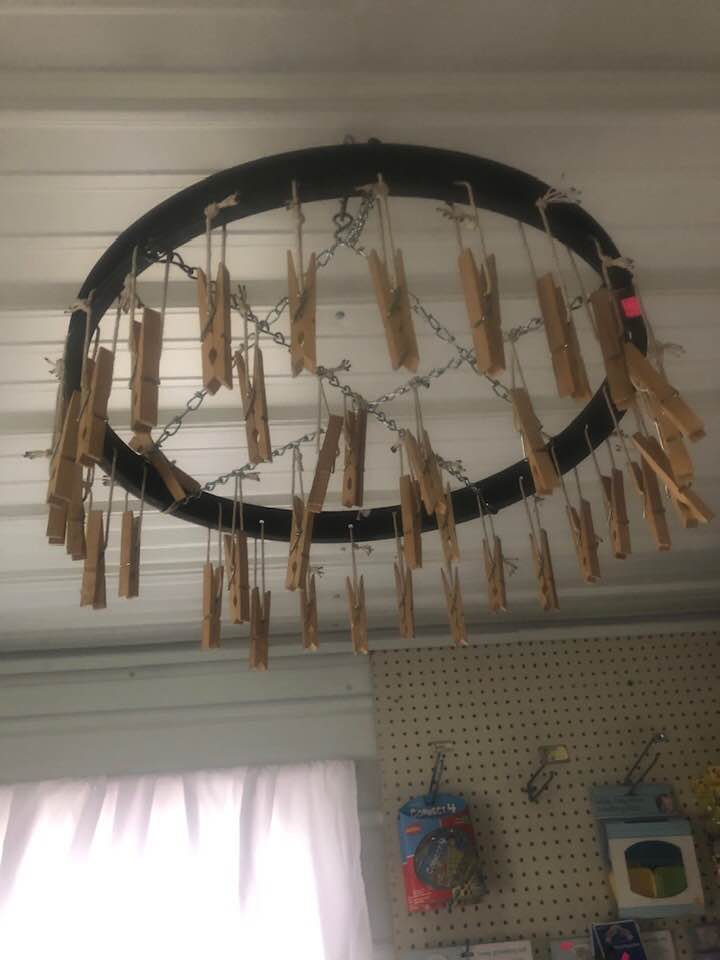
These contraptions are ubiquitous among the Amish. Most people just make their own, but this is one I saw for sale in Amish variety store..This is a "bicycle wheel dryer." Many Amish use this, fashioned from a bicycle wheel festooned with clothespins, to dry smaller items like socks, washcloths, and headcoverings.
They make for a convenient "indoor dryer" during winter and then can easily be moved outside to a porch or tree during warmer months.

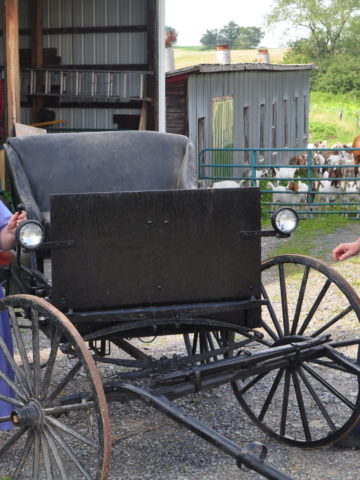



Silas
Its easy put it out to dry for a full 24 hours. Bring it inside and it will be freeze dry. When i had lived on a farm i did. Oh the clothes smell so better than garbage of the chemicals!!
Kevin Williams
Agreed!
Jan
I grew up in suburban Detroit, and I have childhood memories of a clothesline in the basement with clothing drying on it in the 1960s
Kevin Williams
Ah, memories, thanks for sharing, Jan!
CC
Growing up in England in the 50's there was no such thing as a Dryer. Everything went on the clothes line in the back garden, summer or winter. In winter everything froze solid. Sheets, towels, the lot! We had a long drying rack/airer on a pulley in the kitchen, which had a coal burning stove in it that also heated the water. It was labor intensive but economical.
Kevin Williams
Amazing how the clothes dry even when they freeze, definitely more economical than a dryer!
Jacqueline Hilty Keysor
I come from a Mennonite background family on my father's side, and we had a lot of time and money saving traditional ways of doing many chores as well as a rich culinary history of favorite food receipes I cherish.
Kevin Williams
Hilty is a name that does have a lot of history... I knew a lot of Hiltys in Berne, Indiana area who were Amish.
Camby
Nothing ingenious there. I was born in England right after WW2 ended and we never had a washing machine, never mind a dryer. All our washing was put out on the lines in the garden, the lines held taught by a "prop" to give more wind resistance. Even in winter our washing was hung out and I well remember helping to bring in big sheets that were frozen stiff as boards but were dry.
Kevin Williams
Agreed, Camby, just good old-fashioned line-drying, even in winter!
Gary
I live in Massachusetts and my dryer died 15 years ago and I dry clothes indoors or outdoors on a line. No need for a clothes dryer.
Rob Roy
It's a testament to the naivety of the clueless generation that finds this kind of news extraordinary, as if this is some kind of new, energy saving process the Amish have suddenly invented. I lived in a small town in Northern Maine where folks routinely put clothes on the line, Winter and Summer. Despite living in town and having a clothes dryer, my folks put freshly washed clothes on a line to dry. The line was on pulleys and strung 50 feet or so from the corner of our garage to a pole on the edge of our garden so we could stand in one place and hang the clothes, reeling out the line to make place for more clothes. These lines were used regularly well into the 1990's.
BlinGA
I once mentioned to a co-worker that I hang wash out and her reply, "people still do that". LOL! I've always hung wash. I'd much rather spend money on traveling, not to mention reduce my carbon footprint.
Kevin Williams
Agreed and I think line dried laundry smells better!